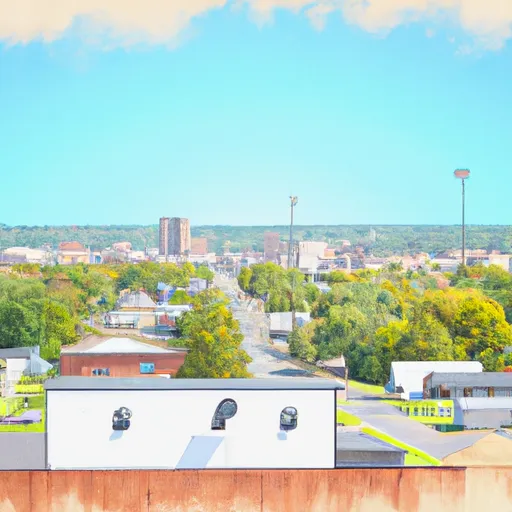-
 Snoflo Premium
Snoflo Premium
Get unlimited access to all our content
With no Ad interruptions! - Start Your Free Trial Login with existing account
Lebanon
Eden Index
Climate
8.3
•
Recreation
4.6
•
Community
•
Safeguard
4.9/10

Lebanon, Oklahoma is a small town located in the southeastern part of the state. It experiences a humid subtropical climate characterized by hot summers and mild winters. Average high temperatures during the summer months range from the 90s°F (30s°C) to low 100s°F (40s°C), while winter temperatures range from the 40s°F (5-10°C) to 60s°F (15-20°C). Lebanon receives about 40 inches (1,000 mm) of precipitation annually, with rainfall distributed fairly evenly throughout the year.
The hydrology constituents in Lebanon include several small creeks and ponds that contribute to the area's water resources. The region is part of the Illinois River watershed, which offers opportunities for fishing and boating. Outdoor enthusiasts can explore the beautiful countryside through hiking trails, camping areas, and picnicking spots located in the nearby Cookson Hills State Park. The park also provides opportunities for wildlife viewing, birdwatching, and nature photography. Lebanon is a serene destination for individuals who enjoy outdoor recreation and the tranquility of nature.
What is the Eden Index?
The Snoflo Eden Index serves as a comprehensive rating system for regions, evaluating their desirability through a holistic assessment of climate health, outdoor recreation opportunities, and natural disaster risk, acknowledging the profound impact of these factors on livability and well-being.
Climate Health Indicator (CHI): 8.3
Lebanon receives approximately
1023mm of rain per year,
with humidity levels near 87%
and air temperatures averaging around
18°C.
Lebanon has a plant hardyness factor of
7, meaning
plants and agriculture in this region tend to thrive during the non-winter months.
By considering the ideal temperature range, reliable water supplies, clean air, and stable seasonal rain or snowpacks, the Climate Health Indicator (CHI) underscores the significance of a healthy climate as the foundation for quality living.
A healthy climate is paramount for ensuring a high quality of life and livability in a region, fostering both physical well-being and environmental harmony. This can be characterized by ideal temperatures, reliable access to water supplies, clean air, and consistent seasonal rain or snowpacks.
Weather Forecast
Streamflow Conditions
Red-Lake Texoma
Area Rivers
Red-Lake Texoma
Snowpack Depths
Red-Lake Texoma
Reservoir Storage Capacity
Red-Lake Texoma
Groundwater Levels
Recreational Opportunity Index (ROI): 4.6
The Recreational Opportunity Index (ROI) recognizes the value of outdoor recreational options, such as parks, hiking trails, camping sites, and fishing spots, while acknowledging that climate plays a pivotal role in ensuring the comfort and consistency of these experiences.
Access to outdoor recreational opportunities, encompassing activities such as parks, hiking, camping, and fishing, is crucial for overall well-being, and the climate plays a pivotal role in enabling and enhancing these experiences, ensuring that individuals can engage in nature-based activities comfortably and consistently.
Camping Areas
| Campground | Campsites | Reservations | Toilets | Showers | Elevation |
|---|---|---|---|---|---|
| Walnut Creek Resort | 25 | 650 ft | |||
| Little Elm Park | None | 547 ft | |||
| Cedar Bayou Marina - Lake Texoma | None | 647 ft | |||
| Brier Creek - Lake Texoma | None | 656 ft | |||
| Johnson Branch - Roberts Lake State Park | 163 | 685 ft | |||
| Buncombe Creek - Lake Texoma | None | 659 ft | |||
| Waxahachie - Bardwell Lake | 70 | 469 ft | |||
| Texoma Marina | None | 651 ft | |||
| Juniper Point - Lake Texoma | None | 655 ft | |||
| Isle du Bois - Roberts Lake State Park | 182 | 685 ft |
Catastrophe Safeguard Index (CSI):
The Catastrophe Safeguard Index (CSI) recognizes that natural disaster risk, encompassing floods, fires, hurricanes, and tornadoes, can drastically affect safety and the overall appeal of an area.
The level of natural disaster risk in a region significantly affects safety and the overall livability, with climate change amplifying these risks by potentially increasing the frequency and intensity of events like floods, fires, hurricanes, and tornadoes, thereby posing substantial challenges to community resilience and well-being.
Community Resilience Indicator (CRI):
The Community Resilience Indicator (CRI) recognizes that education, healthcare, and socioeconomics are crucial to the well-being of a region. The CRI acknowledges the profound impact of these elements on residents' overall quality of life. By evaluating educational resources, healthcare accessibility, and economic inclusivity, the index captures the essential aspects that contribute to a thriving community, fostering resident satisfaction, equity, and social cohesion.

